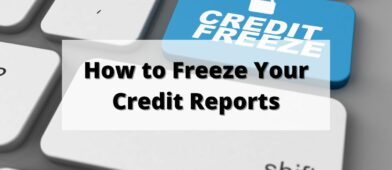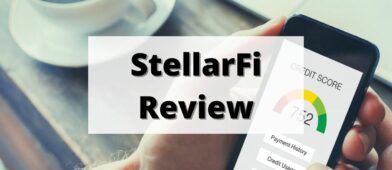The center of my financial network map is my primary bank account, a checking and savings account at a single bank.
The checking account is my primary account, where I pay my bills and receive deposits. The savings account is where my money sits when I don't need it for checking. It earns a little bit more interest (as of this writing, my checking account earns 0.40% APY and my savings earns a little over 1.00% APY).
How do I pick a good checking and savings account?
Here's what I look at (from highest priority to lowest):
Two Factor Authentication
Two-factor authentication (2FA) is nearly standard with major banks but this is Go or No Go situation for me. If they don't use 2FA then I will not bank with them.
When you log into an account, 2FA authentication means they will also try to authenticate your login through another channel (hence, two factors). This might be a text message to your phone, a phone call, an email, or some other method.
This is a small price to pay for security and 2FA is a must-have.
Fees
After 2FA, fees are everything.
Banks need to make money but I believe they should be doing it through lending, not charges levied on customers who deposit their money at the bank. When you deposit money, the bank lends it out and collects interest. When they charge you money to hold your own money, it upsets me on a fundamental level.
I refuse to use a bank with an account maintenance fee. If they are willing to waive it for a reasonable minimum balance ($2,500 at the most), I'm OK with it.
As for fees for a service, like overdraft and ATMs, those I can accept because you are getting something in return. Overdraft protection, which you can often decline, protects you from bouncing important payments. ATM fees will at least give you access to your money on another ATM network, even if you have to pay a fee to get it.
Minimum Balances
Some banks will waive a fee on checking accounts if you set up and receive a direct deposit, like your paycheck, and maintain a minimum balance. The direct deposit keeps you stickier as a customer. Changing a direct deposit acts as a roadblock to changing banks. The minimum balance achieves a similar goal but it keeps more of your money at the bank.
When this gets tricky to analyze is when you have a high minimum balance on a savings account with a garbage interest rate – you effectively paying a fee by forgoing interest.
Bank of America has a savings account that pays a generous interest rate of 0.01%! There is a monthly fee unless you maintain a minimum balance – that minimum balance is $300.
If you were to get 1.00% APY interest, you're only paying $3 a year for that savings account. I think a $300 minimum is reasonable.
If the minimum were instead $3,000 – now you're forgoing $30 a year in interest. It's not bad but it's not free either.
Interest Rate
We live in a low-interest-rate environment and even the best savings accounts will only offer you 1.00% APY (or thereabouts). My primary savings account needs to be within the range of the prevailing rates. It doesn't need to be the absolute highest rate but it needs to be near it.
The Bank of America 0.01% APY is NOT within range. If the best rate out there is 1.05% and mine is 1.00% – that's close enough.
ATMs & Branches
If you want access to your money, you can usually use a debit card assigned to your checking account. The only time you need an ATM or a branch is if you need to get cash.
When evaluating a bank, find out its geographic footprint and its ATM network partnerships. The ATM network is crucial because if you use an ATM in a network, you can access cash for free.
If they have a small ATM network or don't have partnerships, find out how many ATM fees they will reimburse you. For example, Ally Bank has a big network but they also reimburse up to $10 in fees per billing cycle (a month-long).
Signup Bonus
Eons ago, banks would give away free toasters to folks who signed up for bank accounts much like credit card companies used to give away t-shirts on college campuses for new credit card applicants.
These days, banks still give away free stuff but it's now cash. We maintain a list of the best bank sign up bonuses with the minimum starting at $100.
A signup bonus is not a significant factor but it matters. All things being equal, I'll take the one that'll put an extra $100 or $200 into my bank account.
An App and Remote Deposit
I like an app on my phone so I don't need to be on a computer to do a few simple banking tasks, like check my balance or transfer funds between accounts.
Another feature I must have is mobile deposit. This is when you can deposit checks by simply taking a photo with the app. It saves you a trip to a branch/ATM and is amazing. No lines on your phone!
Certificate of Deposit Rates & Options
We are not getting into what I consider some of the minor details. I don't view my bank as a path towards building wealth. With inflation and these low-interest rates, your money is losing purchasing power each year. Even if you chose a 5-year CD, the prevailing interest rate on those still lags estimated inflation.
That being said, sometimes you need the security of access to those funds and can't risk the volatility of the stock market (such as in an emergency fund). That's when I want to see what the CD rates are and what options they have with maturity periods. I want to try to ladder my emergency fund in CDs if possible and do so quickly, so I can accrue interest.
Customer Support Chat Options
I hate calling customer support. The phone trees, the frequent handoffs to different departments, explaining my situation a bazillion times, and all to get a simple question answered or a problem remedied.
Fortunately, many banks now offer online chat. It gives me the ability to chat on the computer with someone while I'm doing something else, hopefully, more productive or at least more entertaining.
Online chat is secure because I'm logged into my account.
Sub-Accounts
Is it easy to open a sub-account? Many years ago, ING Direct (later acquired by Capital One) made it possible to open new savings accounts in mere seconds. You could open a new account for each savings goal, set up automatic transfers, and it was fantastic.
I've yet to find a place that makes it so easy to open sub-accounts, which is why it's so low on this list, but this is really icing on the cake.
What do you look for in a bank account?




Passive Income M.D. says
I’ve found Ally Bank just as easy to setup as ING direct was back in the day. A few minutes of my time to get at least a 1% APY on my savings account, not a bad trade.
John Griswold says
CIT Bank offers 1.3% on savings. Capital One (which absorbed ING) makes it trivial to open a new account. I have been dealing with Capital One since I paid off my mortgage 10 years ago and had to come up with my own “escrow”. In my humble opinion, Capital One has some of the best customer service in the business. I’m new to CIT but they are very easy to deal with. I have checking/savings with Bank of America, but only because I started 40 years ago with banks that merged in under the B/A umbrella.
CIT also has a $100 bonus for opening an account and satisfying certain conditions too!
Lazy Man and Money says
I give my business to USAA because it has most of these. The only thing it might be short on is interest rate and lack of branches. I don’t follow the interest rate because things like unlimited (I think) out-of-network ATMs are extremely valuable to me.
USAA is competitive in most areas so our brokerage, car loans, insurance, even a 2.5% cash back credit card are there.
I do keep Bank of America around just to have a physical branch. I can’t remember using it in the last couple of years. The $20 or so that I lose in interest is just buys me peace of mind.
rapsk says
what is your current choice for checking?
I use Ally Bank as my main checking account.
Derek Dewitt says
I just moved to a new area, so I am looking for a local bank to get set up with soon. I like your point about choosing a bank with a high interest rate. I will be sure to look into this so I can compound more money over time.
Amy Winters says
Thanks for pointing out that a lot of banks will waive the fee on checking accounts if you set up direct deposit and maintain a minimum balance. I’m thinking of opening a checking account soon, so I’ve been looking for tips online about how to choose. I didn’t realize I could benefit from setting up a direct deposit for my paycheck, so I’m glad you mentioned that tip.
Robert Wolf says
Does Wells Fargo give $400.00 Bonus to open a Everyday checking account?
Yes, we maintain a list of their promotions here – https://wallethacks.com/wells-fargo-bonus-promotions/
Angelica says
What if we used a prepaid card will the stimulus check be deposited in the card just asking for a friend.
I suspect that if the next stimulus check is passed and they will use cards, they’ll send new cards.
Thomas Shields says
I have been advised by my tax preparer but I have entirely too many accounts. I have been strongly urged to reduce the number of accounts. The question is how do I go about determining which ones to eliminate and which ones to keep. I would really appreciate some help in establishing a criteria.
Recently I received a letter from the bank where I do most of my banking. The letter informed me that the bank is merging with another bank and the branch where I conveniently do most of my banking will be closing. This means I will have to choose another branch location that is located further. Does this sound like I need to find another bank?
Sounds like you might – cut out the ones you don’t need. 🙂